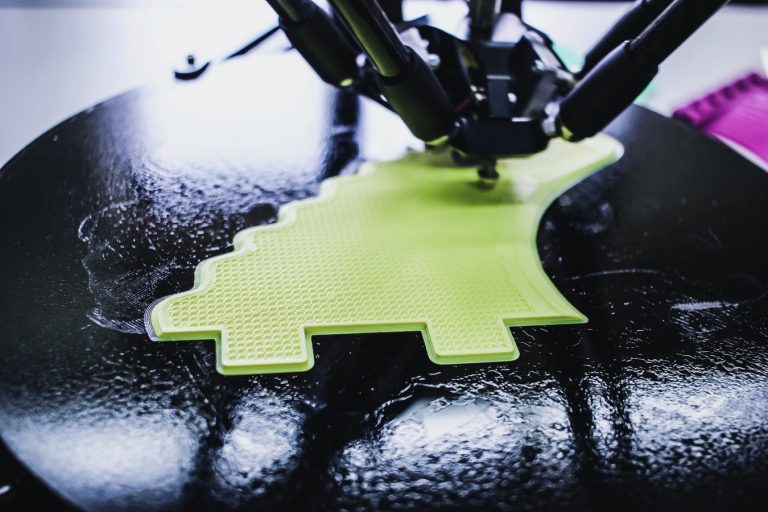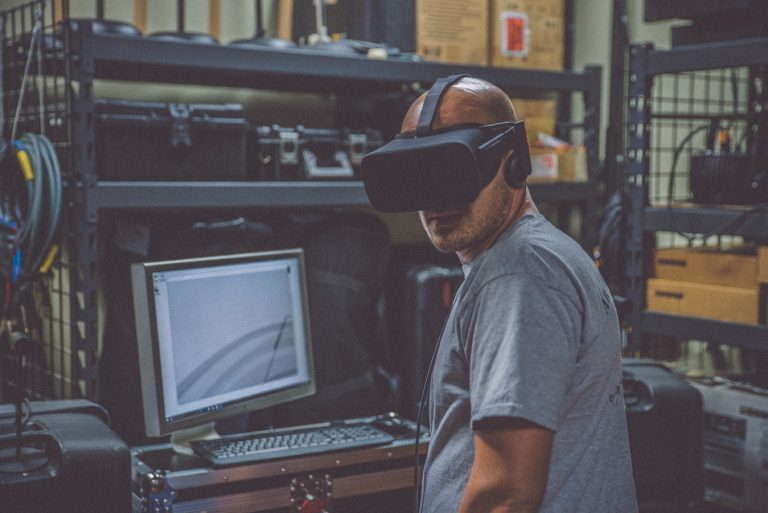A while ago, I wrote about how computer chips are becoming faster and cheaper at an accelerating pace. However, this trend isn’t confined to the realm of information technology alone. Many other technological fields are evolving rapidly as well. Recent advancements promise to bring about significant changes that will impact our daily lives.
These developments also present opportunities for businesses. By capitalizing on macro-economic trends, companies can gain a competitive edge. In a series of three articles, I will discuss ten technological trends that have the potential to significantly alter our world.
1. Connectivity
In the next decade, 5 billion people will be connected to the internet, with the majority accessing it via mobile devices. Smartphones with the capabilities of an iPhone X will be available for less than $50 in the near future. Projects like Ski-Fi by Facebook, Google, and SpaceX aim to provide global access to affordable internet through drones, balloons, and satellites.
This will have a profound effect on developing countries, where people will gain access to a wealth of information. Farmers can learn to improve their yields, and individuals in places like Africa can pursue education online. New economies will emerge, fueled by mobile applications, and billions will be able to share their experiences through social media. The world will be more digitally connected than ever before.

2. Blockchain
Blockchain might be a controversial trend, but it holds immense possibilities. It’s more than just the technology behind Bitcoin; it’s a platform that could underpin a wide range of applications. Blockchain offers the opportunity to completely revamp and innovate financial and administrative processes, reduce bureaucratic burdens, and diminish the need for banks, accounting firms, notaries, and some governmental services.
But blockchain’s potential extends beyond the financial sector. For instance, it could be used for digital identities, micro-insurances tied to products rather than individuals, or for smart thermometers that can independently purchase energy. The possibilities are endless and could fundamentally change our economy.

3. Internet of Things (IoT)
IoT enables objects to connect to the internet. In the future, not just computers and smartphones, but also household appliances will be online. This leads to automated processes, less waste, and safer, more efficient products.
IoT isn’t limited to devices; consider a bridge that can share information about its usage, temperature, and load. With IoT, the bridge could autonomously request maintenance and even pay for it, especially when combined with blockchain technology. A fridge that orders milk when it runs out exemplifies how IoT (potentially in conjunction with blockchain) could revolutionize our experience of products.

4. Big Data
The amount of data being stored is growing exponentially. This increase is due to consumers saving more data, like posting on social media or other websites, as well as organizations and governments collecting and storing more information about citizens. Additionally, the rise of the Internet of Things, as discussed in the first part, means that more (household) devices are starting to collect, store, and share data themselves.
This vast amount of data is useless by itself but can be incredibly valuable when analyzed correctly. Properly utilizing this data can lead to societal advancements. Governments could improve their infrastructure by using sensors to collect data on facilities like trash cans or street lamps, ensuring timely maintenance. In healthcare, Big Data can help tailor medications more accurately to patients or prevent epidemics by early detection of diseases. Companies can also use Big Data to offer (personalized) products and services that better meet customer needs.
The possibilities of Big Data are limitless, especially when combined with other technological advancements, such as the rise of artificially intelligent computers (more on this in the next section). With data, a computer can contribute to solving problems and even become smarter on its own through machine learning, opening up a myriad of applications.
As technology becomes an increasingly integral part of our lives and computer chips grow more powerful and affordable, Big Data will play an increasingly important role in the world. It’s up to us to ensure that Big Data is used correctly, which means considering privacy and other ethical implications.

5. Robotics and Artificial Intelligence (AI)
Developments in artificial intelligence and robotics are advancing rapidly. Some believe that AI could lead to the most significant changes in the world since the industrial revolution due to its vast capabilities. These are already evident in features like speech recognition on smartphones, computer chess games, or Google’s search results. In the future, AI-powered robots will be suited to perform boring, complex, or dangerous tasks, often outperforming humans. They could help keep us healthy, provide more personalized services, and address major global issues like climate change.
However, not all perspectives are optimistic. The late scientist Stephen Hawking warned of the dangers of robots and artificial intelligence before his death. Current military drones are just the beginning. Artificial intelligence could become the third evolution in the history of warfare, after gunpowder and nuclear weapons, potentially leading to wars on a much larger scale, which poses a significant risk to humanity.
Moreover, robots will increasingly resemble humans, making it harder to distinguish between human and machine. Like in the movies “Her” and “Ex Machina,” robots could develop emotional intelligence, making humans feel attracted to them. This requires careful consideration of the consequences of such developments.

6.Genetic Modification
Using genetic material from organisms to alter hereditary information (gene technology) is an emerging trend. Recent molecular-biological techniques, like CRISPR, have made it cheaper and easier to modify genetic information, which could have a drastic impact on the world.
CRISPR has the potential to improve the world significantly. This technique could eradicate serious hereditary diseases, much like vaccinations ended smallpox. It could lead to new treatments for cancer and even potential cures. Additionally, it could help solve the food crisis by making crops more resistant to climate change.
At the same time, CRISPR raises ethical questions about altering human DNA. Should we modify the genes of humans, animals, or plants? What if we make irreversible mistakes? Even if CRISPR has only positive outcomes, we must question whether it is ethical to wield such power.
Clearly, legislation and public discussion are needed to manage the risks associated with CRISPR. My article aims to contribute to this discussion and provoke thought. What about you? What do you think?

7. 3D Printing
An emerging trend is 3D printing. Using digital blueprints (computer files), a 3D printer can produce three-dimensional objects by building them layer by layer. 3D printing is already popular, with everything from buildings to chocolate being printed. It’s particularly useful for creating parts that require a unique shape, such as in aerospace construction and the medical field. Currently, prosthetics are being printed that are customized down to the smallest detail, saving many lives each year.
There’s a growing demand for customization. Consumers are increasingly unsatisfied with mass-produced goods and want to influence the design. Companies like Nike already offer personalized shoes. As 3D printing becomes more accessible to the public, it lowers barriers for individuals to start designing and experimenting themselves. Both individuals and companies are sharing their creations digitally, fostering innovation.
3D printing could revolutionize the manufacturing industry. Physical transportation can be reduced by printing products locally instead of shipping them from distant manufacturing countries. Storage can be greatly minimized since everything can be made on-demand. If a product breaks, the faulty part can simply be reprinted, avoiding the need for a complete replacement. All these factors contribute to reducing storage, surplus, and waste of products, significantly benefiting the environment.
However, care must be taken as 3D printing could infringe on copyright laws. If everyone can print their products, it becomes easier to replicate designs. Therefore, new methods must be devised to protect knowledge and copyrights. “What’s the Deal with Copyright and 3D Printing?” by Michael Weinberg is an interesting paper on intellectual property and 3D printing, discussing the difference between useful and non-useful creative objects, designs that can and cannot receive a license, and how legislation is arranged.

8. E-Health
E-Health involves using electronic technology to improve or support health. From small, smart apps that help improve fitness to tools that allow patients to consult with their doctors without leaving home, like telemonitoring and video calls. E-Health is already providing better quality care at lower costs and will go even further in the future. People might have implants that monitor their health 24/7 (called continuous care). Self-monitoring will lead to more conscious living, potentially reducing healthcare costs. Diseases and conditions can be prevented proactively by timely intervention. Continuous health monitoring will reduce the need for (general) practitioners, allowing them to intervene only when absolutely necessary. Health insurance companies can adjust premiums based on the health data of the insured, encouraging healthier living.
However, the tracking and storing of personal health data raise privacy concerns. What if hackers gain access to sensitive health information? And who is responsible if things go wrong? While E-Health is often viewed in a positive light, it’s crucial to consider the consequences of such developments. Care must remain humane, with attention and love, and not everything should be digitalized and automated.

9. Augmented & Virtual Reality
Augmented Reality (AR) and Virtual Reality (VR) are technologies blurring the lines between digitally generated content and the real world. In VR, users are immersed in a completely computer-generated environment, experiencing the virtual world as if it were real. AR, on the other hand, enhances the real world with digital elements, like holograms. The intention behind AR and VR is to blur the distinction between computer-generated content and reality. Thus, a digital avatar no longer lives on a screen but can move freely in the real world.
The applications of VR are endless, potentially impacting industries like travel, entertainment, journalism, construction, education, retail, sports, and more. For example, VR could offer virtual trips to distant countries or allow surgeons to practice operations in simulations. In the business world, VR meetings could eliminate the need for travel to see each other in 3D.
A well-known example of AR is Pokémon Go, but AR’s potential extends beyond just gaming. It could assist with cooking by providing instructions next to the cutting board, or simplify navigation in the real world. AR could also offer instant translations of foreign languages, eliminating the need to study a new language. Clearly, AR too can revolutionize how we experience products and services. The technology behind AR and VR will continue to evolve, becoming an inescapable part of our lives.

10 . Sustainable Energy
The final technological trend I’ll discuss is sustainable energy. Global energy consumption has increased by more than 50 percent in the last 20 years, a trend that continues. Today, the world’s 7 billion inhabitants consume an amount of energy equivalent to 14 billion tons of oil per year. Only a seventh comes from sustainable energy sources and nuclear energy. More than 80 percent is still produced by burning coal, oil, and natural gas, releasing CO2 and polluting the environment, contributing to climate change.
The earth took millions of years to accumulate reserves of coal, oil, and natural gas, while we’re depleting these fossil fuels in just a fraction of that time. We need to transition to inexhaustible energy sources to ensure that the light still turns on 100 years from now. Fortunately, there are plenty of sustainable alternatives like solar, wind, and geothermal energy, which do not pollute the air, emit little CO2, and are renewable.
Technological advancements are making sustainable energy more viable and affordable. For example, the cost of generating solar energy has dropped by 85 percent in the last seven years. Because sustainable energy is becoming cheaper on the energy market, it’s gradually becoming a more attractive alternative to fossil fuels. Innovations like Elon Musk’s solar panel roof tiles could accelerate the adoption of solar energy. Despite the rapid development of sustainable energy, our planet continues to warm, leading to rising sea levels and melting sea ice. The consequences, such as increased flooding and food shortages in dryer areas, are significant. I plan to discuss climate change and potential solutions in a future article. For now, I’ll leave it at that, as the topic is too vast to summarize briefly in this article.

Conclusion
As we navigate through an era of unprecedented technological advancements, the ten trends outlined in “10 Technological Trends That Will Transform Our World” highlight the potential for significant societal shifts. From the democratization of manufacturing through 3D printing to the personalized healthcare revolution brought by E-Health, these developments are setting the stage for a future where customization, efficiency, and sustainability are paramount. The integration of Augmented and Virtual Reality into daily life promises to redefine our interaction with the digital and physical worlds, while the push towards sustainable energy addresses the urgent need for environmental stewardship.
However, these advancements are not without challenges. Issues of privacy, ethical use of technology, and the potential for widening social inequalities must be addressed. Moreover, the rapid pace of change requires adaptability and a willingness to embrace new paradigies. As individuals, businesses, and governments, our response to these trends will shape the trajectory of human progress. The future is being written today, and it is up to us to ensure it is one that benefits all of humanity.




